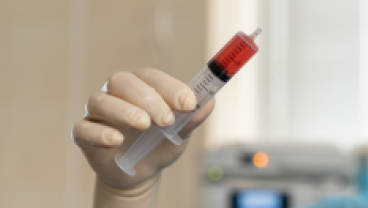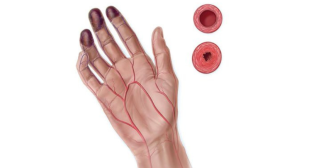About Haematology
Hematology is the medical specialty responsible for diagnosing and managing a spectrum of benign (non-cancerous tumor) and malignant (cells that multiply without control and spread locally and/or to distant sites) disorders of erythrocytes, leucocytes, and thrombocytes, as well as the coagulation system in adults and children. Learn more about the causes, symptoms, diagnosis, types, and treatment of hematological disorders.
Causes
Drug-induced hematologic disorders such as megaloblastic anemia, hemolytic anemia, thrombocytopenia and so on
A lack of certain nutrients in the diet, such as deficiencies of vitamin B12, copper, and vitamin C
They can be caused by certain genes transmitted from the parents
Symptoms
Blood disorders can cause several symptoms in almost any portion of the body. The most frequently observed symptoms are due to:
Decrease in the Blood Components:
- Reduced red blood cells and hemoglobin can cause anemia symptoms, such as tiredness and shortness of breath.
- Declined white blood cells can cause recurrent fever and infections.
- Decreased platelets can cause unusual bleeding and bruising.
Increase in the Blood Components:
- Elevated red blood cells or immune system proteins can lead to blood thickening.
- Increased platelets or blood clotting factors can cause abnormal bleeding.
Apart from these, other symptoms include:
- Blood clots usually in the leg
- Eating of dirt
- Swollen lymph nodes
- Fluid-filled bubble in the mouth
- Blood in the urine
Diagnosis of Hematological Disorders
To diagnose hematological disorders, healthcare professionals first take an individual’s medical history. Then, they do a physical examination of the skin and mucous membranes, joints, suspected areas for lymph node enlargement, and abdomen to check for spleen enlargement.
Laboratory Tests
Healthcare professionals use tests to diagnose blood disorders based on an individual’s symptoms and physical examination results.
Complete Blood Count: Most common blood tests requested by clinicians help assess the total numbers and characteristics of different cell components in the blood.
Blood Smear: It helps assess the shape and count of different types of blood cells.
Reticulocyte Count: It estimates the number of newly formed erythrocytes in a specified blood volume.
Clotting Tests: One parameter of the body’s capability to stop bleeding is the number of thrombocytes. Other tests can estimate the overall function of the several proteins required for normal blood clotting (clotting factors). The most common of these tests are the prothrombin time and partial thromboplastin time.
Estimation of Proteins and Other Substances: These tests focus on measuring the level of blood-related proteins, such as erythropoietin; antibody proteins that can be measured in urine and blood; iron levels; and certain vitamins, for instance, vitamin B12 and folate that are necessary to produce healthy blood cells.
Blood Typing: Blood type is decided by the presence of particular proteins on the surface of red blood cells.
Blood cells are formed in the soft fatty tissue inside bone cavities. This tissue is called bone marrow. In certain patients, bone marrow needs to be examined to assess blood abnormalities. Healthcare professionals can take distinct types of bone marrow samples through the following methods:
Bone Marrow Aspiration:
It is a technique in which a small amount of bone marrow fluid and cells is removed, usually from the hip or thigh bone.
Biopsy:
It is a procedure in which a small piece of bone and bone marrow is removed.
They are generally performed both in the inpatient and outpatient settings to diagnose an array of hematologic disorders.
Common Hematologic Disorders
- Lymphoma: A cancer of the lymphatic system that causes white blood cells to multiply uncontrollably. Lymphomas are categorized into:
- Hodgkin lymphoma
- Non-Hodgkin lymphoma
- Myeloma: A cancer that develops from plasma cells in the bone marrow
- Leukemia: A form of cancer that affects the bone marrow as well as blood. It is caused by the prompt production of abnormal white blood cells. There are four broad categories of leukemia:
- Acute lymphocytic leukemia (ALL)
- Acute myelogenous leukemia (AML)
- Chronic lymphocytic leukemia (CLL)
- Chronic myelogenous leukemia (CML)
- Hemophilia: An inherited bleeding disorder in which the blood does not clot properly
- Thrombocytopenia: A condition that occurs when the platelet count in blood is too low
- Sickle Cell Anemia: A genetically transmitted blood disorder that affects hemoglobin, the pigment that carries oxygen through the body
- Thalassemia: A heterogenous group of genetic disorders that result from a decreased production of alpha or beta chains of hemoglobin (Hb)
- Splenomegaly: Enlargement of the spleen, estimated by size or weight
- Thrombosis: A condition leading to complete or partial blockage due to blood clot formation within blood vessels, limiting natural blood flow
Treatment of Blood Disorders
- Blood transfusion wherein healthy donor blood is given to the patient to replenish blood loss due to impaired blood production
- Bone marrow transplant is a technique through which damaged bone marrow can be replaced with healthy bone marrow stem cells
- Diet modifications (consuming food items rich in iron and vitamin B)
- Oral iron preparations,which may be taken in the form of liquid or tablet
- Vitamin B12 injections and folic acid pills are used for the treatment of blood disorders, for instance, megaloblastic anemia
- Anticoagulation therapy to prevent excess coagulation of blood
- Several blood cancer chemotherapies are offered under the care of hematologists
- Therapeutic bloodletting is employed in rare cases of iron load. One drug predominantly used to treat iron overload is deferoxamine
Early screening of blood disorders is crucial in disease detection, providing valuable insights that help in timely intervention. Fortis Healthcare is one of India’s best hospitals for dealing with hematological disorders and delivering high-quality patient care.
Our Team of Experts
View allMedical Procedures for Haematology
View allOur patient’s stories
View allExplore blogs
View allExplore Videos
View all-
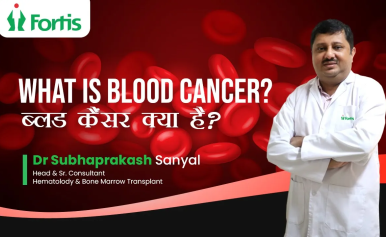 What is Blood Cancer?
What is Blood Cancer? -
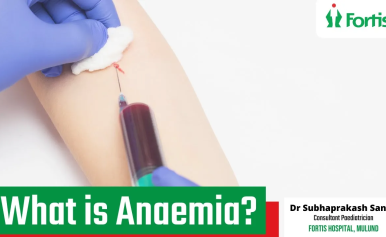 What is Anaemia?
What is Anaemia? -
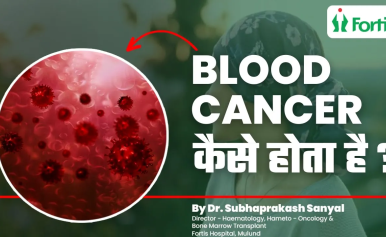 Blood Cancer Kaise Hota Hai
Blood Cancer Kaise Hota Hai
Related Specialities
Other Specialities
-
Explore Hospitals for Haematology
Fortis Cancer Institute, Defence Colony, New Delhi Fortis Memorial Research Institute, Gurgaon Fortis Escorts Hospital, Faridabad Fortis Hospital, Noida Fortis Flt. Lt. Rajan Dhall Hospital, Vasant Kunj Fortis Hospital BG Road Bangalore Fortis Hospital, Anandpur, Kolkata Fortis Hospital, Kalyan, Mumbai Fortis Hospital, Mulund, Mumbai Fortis Hospital, Shalimar Bagh, New Delhi Hiranandani Fortis Hospital, Vashi, Mumbai S L Raheja Hospital, Mumbai Fortis Hospital & Kidney Institute, Gariahat, Kolkata Fortis Hospital, Manesar, Gurugram -
Explore Doctors for Haematology by Hospital
Doctors in Fortis Cancer Institute, Defence Colony, New Delhi Doctors in Fortis Memorial Research Institute, Gurgaon Doctors in Fortis Escorts Hospital, Faridabad Doctors in Fortis Hospital, Noida Doctors in Fortis Flt. Lt. Rajan Dhall Hospital, Vasant Kunj Doctors in Fortis Hospital BG Road Bangalore Doctors in Fortis Hospital, Anandpur, Kolkata Doctors in Fortis Hospital, Kalyan, Mumbai Doctors in Fortis Hospital, Mulund, Mumbai Doctors in Fortis Hospital, Shalimar Bagh, New Delhi Doctors in Hiranandani Fortis Hospital, Vashi, Mumbai Doctors in S L Raheja Hospital, Mumbai Doctors in Fortis Hospital & Kidney Institute, Gariahat, Kolkata Doctors in Fortis Hospital, Manesar, Gurugram












